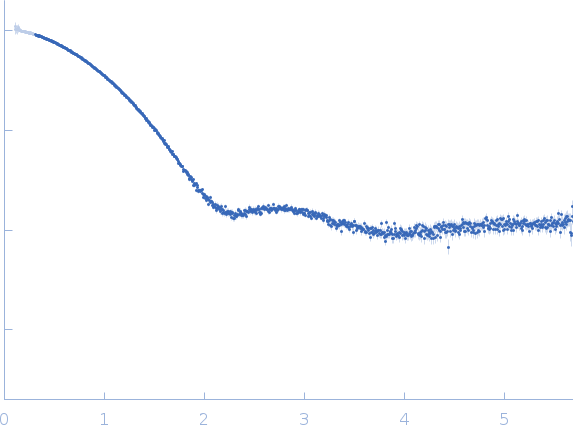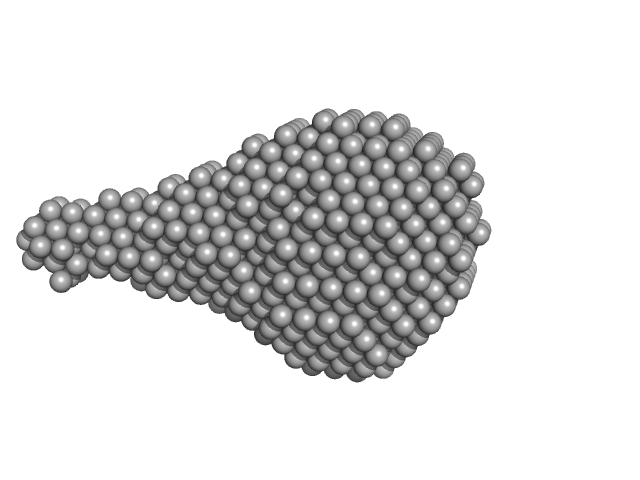|
Synchrotron SAXS
data from solutions of
Calcium-Activated Chloride Channel Regulator 1 VWA domain
in
20 mM HEPES, 150 mM NaCl, 2% glycerol, pH 7.4
were collected
on the
12-ID-B SAXS/WAXS beam line
at the Advanced Photon Source (APS), Argonne National Laboratory storage ring
(Lemont, IL, USA)
using a Pilatus 2M detector
at a sample-detector distance of 1.5 m and
at a wavelength of λ = 0.127 nm
(I(s) vs s, where s = 4πsinθ/λ, and 2θ is the scattering angle).
Solute concentrations ranging between 2.0 and 8.2 mg/ml were measured
at 10°C.
32 successive
0.300 second frames were collected.
The data were normalized to the intensity of the transmitted beam and radially averaged; the scattering of the solvent-blank was subtracted.
The low angle data collected at lower concentration were merged with the highest concentration high angle data to yield the final composite scattering curve.
|
|
 s, nm-1
s, nm-1
